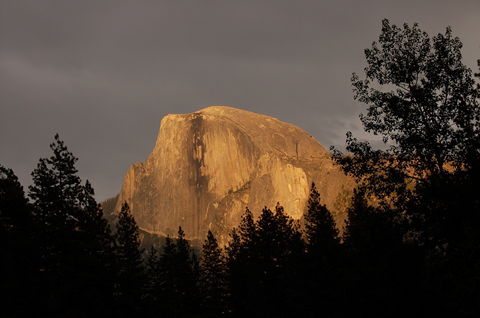 I am dating myself, but when I started rock climbing, almost everyone wore helmets. It was as essential a piece of gear as your harness and shoes. But in the decades that followed, helmets became passe. Part of that change had to do with climbing styles and style (fashion) in climbing. Some comes from a misunderstanding of risk and people assuming that helmets are only to protect you from rockfall (no rockfall means no helmet needed). But it’s not that simple, let me tell you my friend Dan’s story.
I am dating myself, but when I started rock climbing, almost everyone wore helmets. It was as essential a piece of gear as your harness and shoes. But in the decades that followed, helmets became passe. Part of that change had to do with climbing styles and style (fashion) in climbing. Some comes from a misunderstanding of risk and people assuming that helmets are only to protect you from rockfall (no rockfall means no helmet needed). But it’s not that simple, let me tell you my friend Dan’s story.
Dan was lead climbing in the Gunks in New York in the late 80’s and he was wearing a helmet. In part that’s because he was an EMT and in medical school and he valued his brain. Dan took a lead fall and pendulumed, smacking the side of his helmet against the rock (no rock fall here). He hit so hard that his 1980’s (heavy) fiberglass helmet cracked and Dan hung in the air unconscious for 20 minutes while his belayer held him in place, unable to lower him and other climbers initiated a rescue. For those of you with first aid training, he had a Traumatic Brain Injury (TBI) and was immediately transported to the local ER. He regained consciousness on the way and was treated and eventually released. But his medical problems didn’t stop there. He had significant short term memory loss for the next 6 months. If you told him that you had a bagel for lunch and then asked him what you had for lunch, he couldn’t remember. It was pretty hard being a medical student when you can’t remember what your patients tell you from moment to moment. He also had double vision in one eye from retinal damage due to the impact. When he looked straight ahead with his right eye he saw double but if he looked down his vision was normal. He ended up having surgery to cut and resew the muscles in his right eye so that the right eyeball was ’tilted’ up. Then when he looked straight forward he was looking out of the bottom of his eye and could see normally. Dan was convinced that without a helmet he would have died or had permanent extensive brain damage. I’ve continued to wear a helmet ever since.
Helmets are not just for rock fall, they’re also for falls on rock. Some climbing areas are know for loose rock so people wear helmets there and not in other places. But falls on rock are a lot more common and it’s not just lead falls. Inverted falls can happen in lead and sport and can easily result in head impact. We now know a lot more about TBI in sports thanks to research on football, hockey, soccer and boxing injuries. Repeated small TBIs can lead to permanent damage just as a dramatic high impact whipper like Dan’s can. Traumatic Brain Injury is serious business so any climber needs to keep both of those things in mind when making the decision about wearing a helmet. Helmet technology has come so far in the last five years with lighter designs that the excuses about it being too heavy no longer hold water.

There’s a Facebook photo that recent caused a lot of controversy, a single mother climbing with a toddler on her back with lots of people saying it was irresponsible. What I found most irresponsible is that the woman and her belayer both had helmets on but the toddler didn’t. Both adults considered the hazard of climbing required a helmet but the toddler had no such protection. Crazy if you ask me.
The British Mountaineering Council (BMC) is running a helmet safety campaign to educate climbers about helmet use and I applaud them for this effort. You can read more about their campaign along with guides to helmets at the following sites:
- BMC Helmet Campaign
- BMC Helmet Guide (PDF)
- Keeping a Head: a head injury case study
- Weighing the Risks
- UKClimbing.com Helmet Article
Yes, I wear a helmet biking, whitewater kayaking, Telemark skiing and climbing. Brain buckets may have once been a derogatory term, but thanks to Dan’s lesson, I value my brain and am happy to keep it safe in a bucket, especially now that they are so stylin’.



